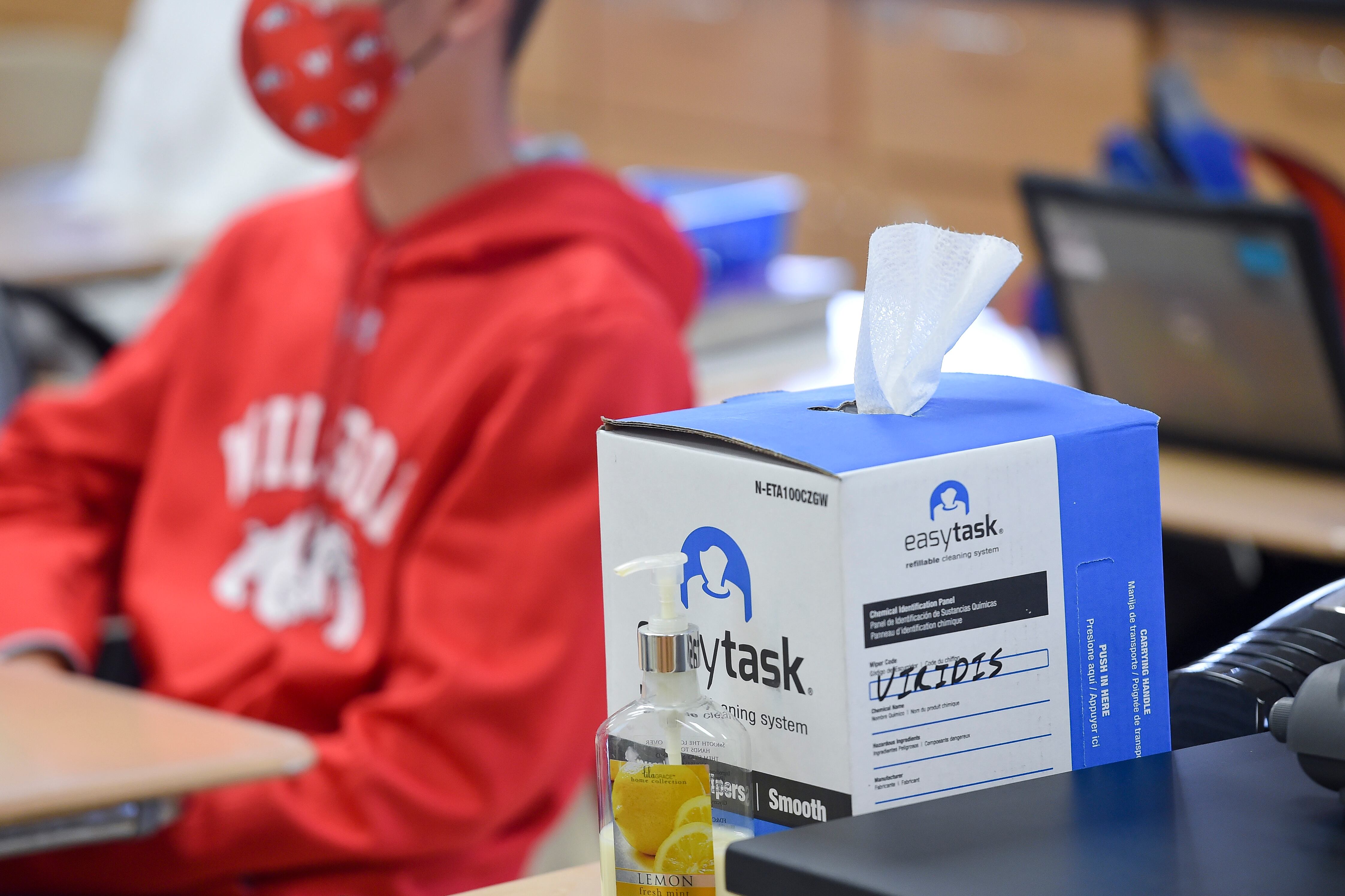New Chicago data on coronavirus cases and outbreaks in day cares and schools appears to back up public health officials’ assurances that these settings have not been the site of major transmission — but the numbers don’t factor in a recent sharp increase in infections citywide.
The Chicago Department of Public Health data, provided to Chalkbeat through a Freedom of Information request, are only through Oct. 17, the cusp of what officials have described as a second wave of infections. From April 1 through mid-October, the city has tracked 267 cases in child care centers, 207 in private and charter schools that offer some in-person instruction, and 21 at in-person park district camps. Most of those cases, though, involved adults — 90 cases in day cares, 145 cases in schools, and five at camps involved students.
Most of the cases were isolated, officials said. During that period, there were 20 cases at day cares when two or more infections occurred within 14 days of each other, 12 at schools, and one at a camp. In late October, the city and state changed the definition of “outbreak” to five or more related cases, but they continue to track two or more related infections as “clusters.”
Health officials have said in recent days that the citywide rise in COVID-19 cases has not had a marked impact on settings serving children. But more recent data is not available yet, and there’s still no one-stop source for state, city, and Chicago Public Schools numbers, which are tracked separately.
The city’s health department does not have precise numbers on how many children have attended day cares since they reopened last summer or private and some charter schools that have reopened this fall, or how many adults have been employed at them. About 19,000 students alone attend Catholic schools in the city, with about 2,700 teachers and staff.
Chicago Mayor Lori Lightfoot and the city’s top health official, Dr. Allison Arwady, have frequently referenced school-based data in their comments around reopening schools. But that data has been hard to find, a point of concern among parents and educators. The city’s COVID dashboard breaks down cases by age group but does not signal which cases are connected to schools versus community spread.
The numbers through mid-October seem to echo national data that suggests that with masking, social distancing, and other measures, schools and other settings that serve children can minimize COVID-19 transmission between students, said Dr. Larry Kociolek, a physician at Lurie Children’s Hospital of Chicago and assistant professor of pediatrics at Northwestern University.
“However, with rising rates in the community, we need to remain vigilant to ensure this safety record continues,” he said.
Parents and experts have called for more publicly available, real-time data about school- and child care-based cases and outbreaks. They have argued such information would help inform crucial decisions about when and how to reopen school buildings — and help families decide whether they are comfortable sending their children back.
Chicago case data is also missing from a new state dashboard launched Friday that tracks outbreaks and contact tracing data across Illinois.
According to that dashboard, there have been 10 school-based COVID-19 outbreaks statewide in the past 30 days, which includes those associated with before- and after-school programs, such as sports. There have been 647 schools with potential coronavirus exposure statewide, including about 230 in Chicago, meaning somebody with confirmed or probable COVID-19 visited those campuses.
A challenge in interpreting data on school-based cases is that it is often unclear whether students and adults contracted the virus in those settings — or in the broader community.
Chicago Public Schools is tentatively planning to bring back pre-kindergarteners and some special education students at some point during the school year’s second quarter, which started Monday. Parents in those programs had to respond to a survey about whether they planned to send their children back to school buildings late last month.
The district recently started reporting its own data on COVID-cases and is not included in the statewide dashboard. By its own count, the district has seen 318 cases among employees or other adults and eight cases among students since March, with a marked uptick in cases since the start of this school year, when it began requiring more employees to report to work. Chicago school buildings have been closed since March, but a handful of campuses have been serving as child care sites.







